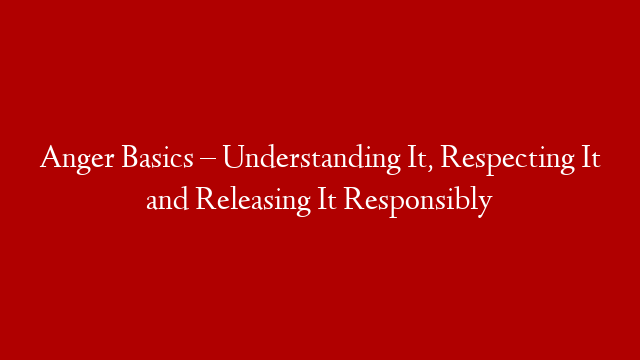By far the most commonly experienced human emotion is anger. As irritation or annoyance anger is frequently expressed with tacit or overt approval, even social acceptance. Rage and fury, of course, are less likely to be socially acceptable. Resentment and frustration are par for the course. So anger, toxic as it is, has a place in the social setting, since it is understood and forgivable and since it represents a human failing that is considered morally acceptable, so long as it doesn’t get too out of hand.
But what do we need to know about anger? How can we heal ourselves of it? Why are its negative effects so potent?
First, let’s understand one basic point. Anger is most often a lid on a deeper emotion. So, for example, if you are experiencing deep grief, anger is easier to feel as a distraction. When you are overwhelmed with a conflict of emotions that is a challenge to express and which fills you with uncertainty and vulnerability, anger may be chosen as a viable surrogate emotion.
Second, although we pay lip-service to its social acceptability no one really likes anger. So it remains repressed and confused with aggression and rage, which are fundamentally different experiences.
Third, anger is toxic and bad for you, whereas the release of anger in the form of catharsis is not. This is because held-in anger is energy that has to go somewhere; it must take form, usually in the unconscious world and/or in the physical organism.
So what can we do about anger?
To understand anger as a cover-up for a deeper feeling we must become familiar with our inner world. Our emotions must not be a secret from us and we must not always keep them hidden from others. Working our way down through layers of experience at mental, physical and emotional levels as a daily exercise, we can begin to become familiar with our inner life and benefit from a growing awareness of ourselves.
To deal with the social rejection of genuine anger we must differentiate between feeling or experiencing anger and releasing or expressing anger. Then we are able to make responsible decisions about how to handle anger. Playing tennis or squash, chopping wood, running and energetic walking are all effective ways to release anger.
A couple more things to “get”: One, accept anger in yourself. It is not unnatural; we are not all saints and it is nothing to be ashamed of. Concentrate on dealing with it intelligently and understanding it deeply.
Two, anger, like fear and hurt, are emotional tones and expressions and experiences of you total energy system. It is vital that you treat primary emotions like anger, fear, need and hurt with respect and honor them as part of the human experience to be healthy in mind, body and soul.
Three,cultivate gentleness and humility; be less reactive and self-obsessed. Angry behavior is like other emotional conditioned behavior: it is learnt. Breaking the habit cannot be overestimated. So, identify your triggers, become aware of what makes you angry, and then safeguard yourself against them by setting yourself the challenge to respond in a more gentle way.
Finally, psychotherapy and counseling are the specialist approaches that deal with anger patterns and the sources of angry behavior. Going into therapy or counseling, for even a short time, may teach you enough to turn your life around if anger is a problem for you.



